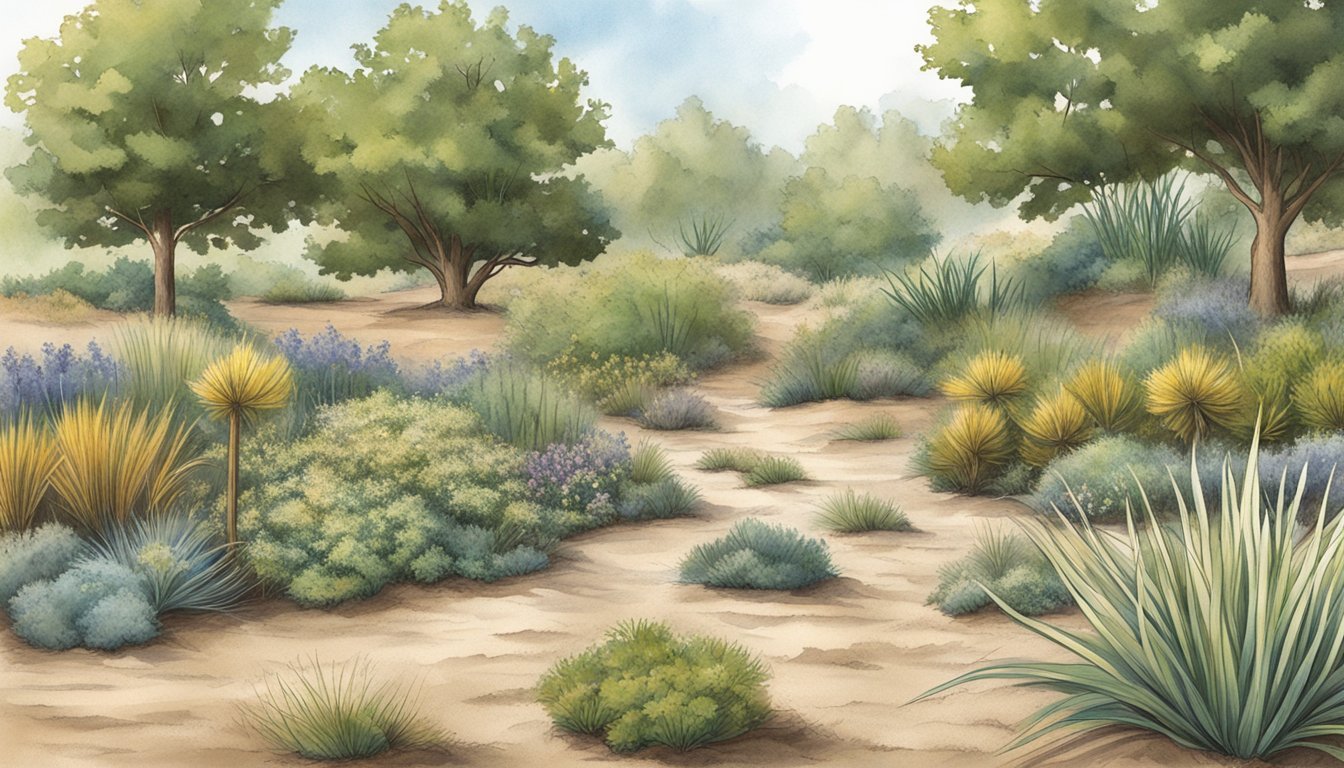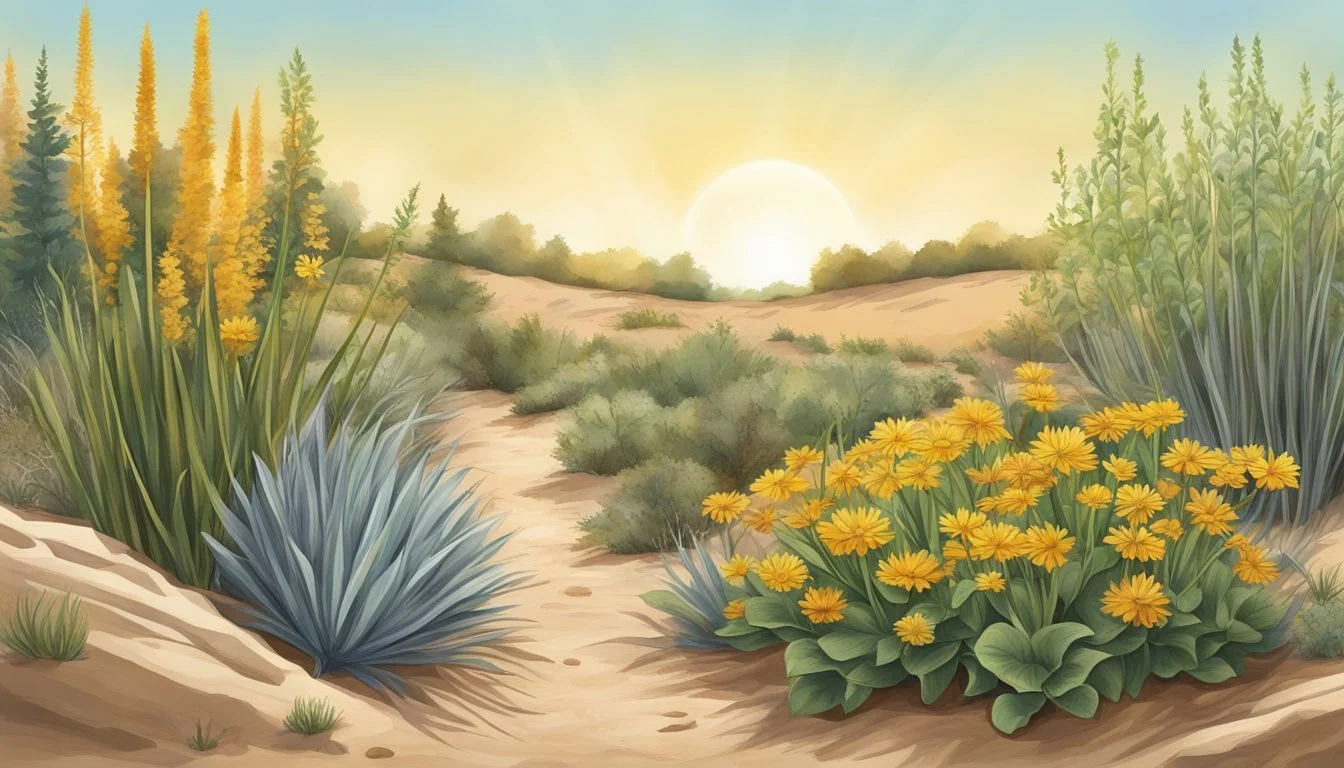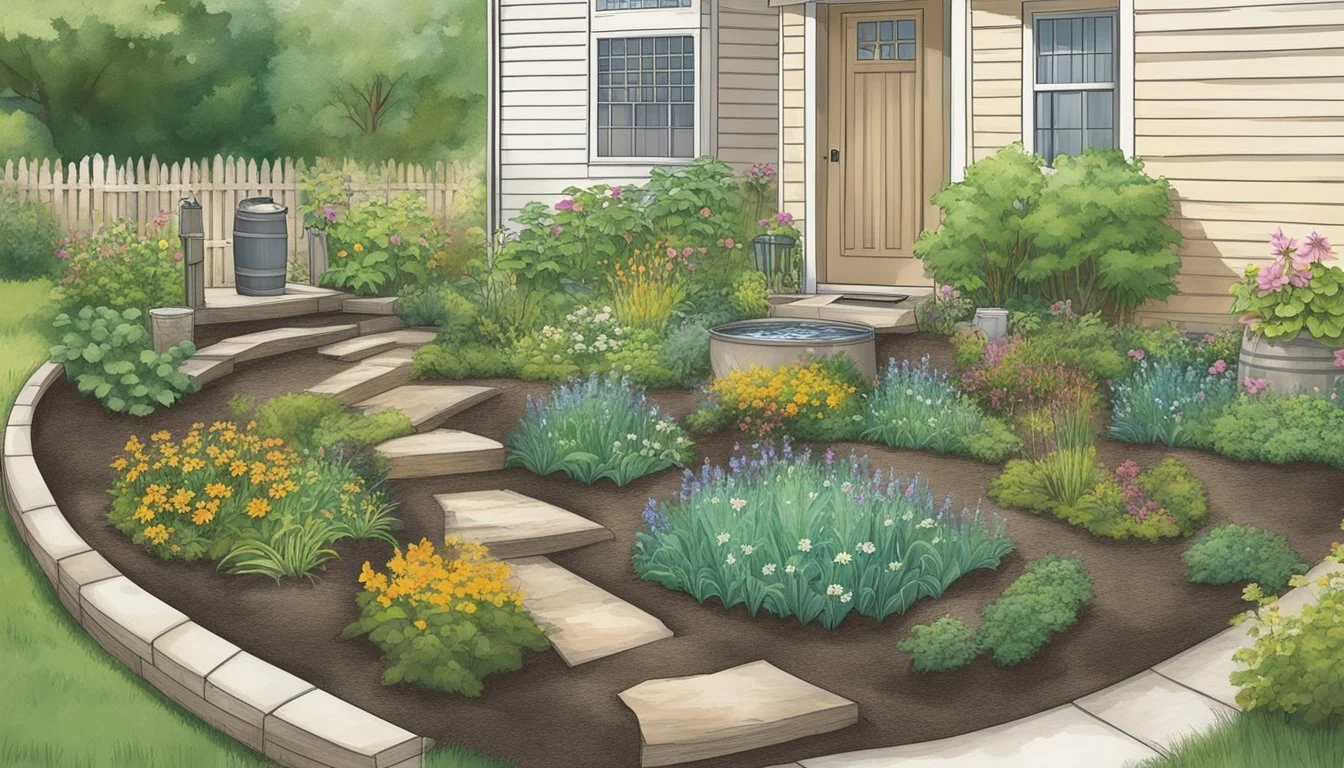Drought-Tolerant Plants in Michigan
The Ultimate Guide for Resilient Gardens
Gardening enthusiasts in Michigan often seek out options that reduce both the environmental impact and the need for maintenance in their landscapes. Drought-tolerant plants are becoming increasingly popular due to their ability to thrive in Michigan's varied climate, which can include dry spells during the summer months. These plants are not only resilient in the face of water scarcity but also offer a practical solution for homeowners and landscapers looking to conserve water and save on irrigation costs.
Choosing the right plants is crucial for creating a garden that can withstand periods of drought. Many species native to Michigan exhibit natural drought resistance. With deep root systems, they are well-adapted to accessing moisture levels beneath the soil surface, exhibiting a remarkable capacity to sustain their health even in dry conditions. These plants contribute to an eco-friendly garden, supporting the local ecosystem while providing an attractive and sustainable landscape.
For those considering incorporating drought-tolerant species into their gardens, research and planning are important steps. Identifying plants such as false blue indigo, with its deep-rooting attribute, and those with silvery or hairy foliage like silvery sage, known for their water-smart qualities, can make a significant difference in a garden's resilience. With a well-planned selection of drought-tolerant plants, gardeners in Michigan can cultivate a beautiful, low-maintenance, and drought-resistant garden.
Understanding Drought and Its Impact on Flora
Drought can be broadly defined as a prolonged period lacking sufficient water, impacting ecosystems significantly. It results, predominantly, from reduced rainfall and exacerbated by climate change effects.
In Michigan, diverse flora often face the challenges of water loss, thereby compromising their normal functioning. Water is fundamental for photosynthesis, nutrient transport, and maintaining turgor pressure within plants. Drought conditions may, therefore, lead to stunted growth, wilting, and in severe cases, death of vegetation.
The state's ecosystems, comprising various plant species, experience stress when drought persists. Here's a quick overview:
Photosynthesis: Reduction of water availability limits this process, essential for growth and survival.
Nutrient Uptake: Water scarcity affects the soil's nutrient solubility and root's ability to absorb them.
Transpiration: Less water availability means lower transpiration rates, affecting cooling of plant tissues.
Some Michigan native plants have adapted by developing drought tolerance strategies, including:
Deeper root systems to access lower water tables.
Waxy leaf coatings to minimize water loss.
Closing stomata during the hottest parts of the day to conserve water.
Climate change predicts more frequent and intense drought periods, posing risks to Michigan's flora. It may alter species distribution and the composition of plant communities, thereby affecting the entire ecosystem.
Assessment and proactive measures are crucial for conservation efforts. Adaptive landscaping with drought-resistant plants and efficient water management practices will help mitigate the negative impacts of droughts on flora.
Identifying Drought-Tolerant Plants
When selecting plants for a water-efficient garden in Michigan, it is essential to identify species that are naturally adapted to thrive with minimal watering. These plants typically possess certain traits that enable them to conserve water and withstand dry conditions.
Characteristics of Drought-Resistant Flora
Drought-resistant flora exhibit distinct characteristics that reduce water loss and maximize water uptake. Look for plants with reduced leaf areas or small leaves that limit transpiration. Leaves with deep indentations, silvery or hairy foliage reflect sunlight and conserve moisture. These adaptive features contribute to a plant's ability to thrive with less frequent supplemental watering.
Trees Well-Suited for Dry Conditions
Selecting the right trees is crucial for creating a water-conscious landscape. Species like the resilient White Fir, sturdy Bur Oak, and versatile Honeylocust are excellent choices due to their deep root systems and drought tolerance. These trees require less water usage once established and add canopy coverage, enhancing overall landscape health.
Shrubs and Bushes That Conserve Water
Incorporating drought-tolerant shrubs like Bush Cinquefoil (Potentilla) and Butterfly Weed is an effective way to conserve water. These landscape plants are not only visually appealing but also require minimal care in terms of watering, making them eco-friendly options.
Perennials and Grasses for Water-Efficient Gardens
For a sustainable garden design, consider perennials such as Yarrow and Purple Coneflower. These native plants, along with ornamental grasses, form the backbone of a drought-tolerant garden by providing resilience and texture with very little need for watering.
Annuals and Groundcovers for Dry Landscapes
Even in dry conditions, annuals like Moss Rose can add color and variety to your garden. For effective ground cover, consider drought-tolerant options such as Barrenwort or Stonecrop, which deliver robust coverage and require minimal watering, aiding in landscape water conservation.
Herbs and Other Plants for Diverse Conditions
Herbs such as Lavender, Thyme, and Catmint are excellent for diverse conditions ranging from full sun to partial shade. These aromatic plants not only add utility to your garden but also require less watering, fitting perfectly into a drought-tolerant landscape palette.
Designing a Drought-Tolerant Landscape
When creating a drought-tolerant landscape in Michigan, it is essential to select appropriate native plants, improve soil conditions, and apply strategic watering techniques. The goal is to develop a resilient garden that conserves resources and withstands variations in moisture levels.
Planning and Plant Selection
Choosing the right plants is critical for a successful drought-tolerant landscape in Michigan. Opt for native species that are adapted to Michigan's climate and can thrive with minimal irrigation. Michigan State University Extension recommends grouping plants with similar water needs to maximize efficiency and reduce plant death. This practice also allows for the segregation of more water-demanding plants, which can be placed in areas where they can receive additional moisture without affecting the needs of drought-tolerant species.
Soil Improvement Strategies
To ensure that plants have the best chance at survival, focus on creating well-drained soil that can retain moisture without becoming waterlogged. Amending soil with organic matter can improve soil conditions and promote water uptake. The ideal soil type should support the root systems of drought-tolerant plants, enabling them to establish quickly and become resilient to dry conditions.
Effective Watering Techniques
Watering correctly is pivotal to conserving resources while maintaining a drought-tolerant landscape. Implement irrigation methods such as drip irrigation, which deliver water directly to the roots and minimize waste. In conjunction, practising smart gardening techniques like watering early in the morning reduces evaporation and ensures that plants receive moisture when they need it the most.
Supplemental Care and Maintenance
While drought-tolerant landscapes require less maintenance, some care during establishment is necessary. Periodic checks for soil moisture levels and targeted fertilizer application can be beneficial. Consistent maintenance practices help plants develop strong root systems, enhancing their drought resistance and reducing long-term care requirements.
Adapting to Site-Specific Conditions
Each landscape in Michigan will have unique site conditions, such as exposure to light and variations in site-specific moisture levels. One must adapt the garden design to these conditions, taking into account the microclimate of each area within the landscape. Michigan State University advises gardeners to assess their specific site conditions thoroughly before implementing drought-tolerant landscaping techniques.
Supporting Biodiversity with Native Species
Native plants are fundamental to maintaining biodiversity in Michigan's ecosystems. By incorporating plants like drought-tolerant prairie species, gardeners and conservationists can create environments that not only conserve water but also support a diverse range of wildlife.
Benefits of Native Plants:
Adaptation: They are well-suited to Michigan's climate, requiring less maintenance.
Resilience: Have a higher tolerance to drought, reducing the need for watering.
Wildlife support: Provide critical habitat for local fauna, from birds to pollinating insects.
Contributions to Ecosystem Stability:
Food and Shelter: Native plants provide food and shelter for various animals, ensuring survival of local species. Sustainability: They contribute to a sustainable ecosystem by promoting soil health and water conservation.
Particular species act as a keystone in the ecosystem, holding a significant role in supporting biodiversity. For instance, certain native plant species sustain 90% of butterfly and moth species, which are vital for pollination and as a food source for other wildlife.
By integrating native species into landscaping, Michigan residents help to fortify the local ecosystem against climate challenges while also providing for the needs of wildlife. As these plants are inherently equipped to thrive in local conditions, they serve as an ecological cornerstone for both flora and fauna.
Managing Pests and Diseases in Dry Climates
In dry climates, the careful selection of drought-resistant plants is crucial for minimizing the stress of scarce water conditions. However, there is also a need to pay attention to pest management and disease resistance even in these tough plants.
Pest Management: Drought can drive certain pests, such as nematodes, to seek moisture from the roots of plants, causing more damage than they would in wetter conditions. Gardeners should monitor for signs of nematode damage, particularly if growing susceptible crops like tomatoes or cucumbers. One may also use other moisture-conserving ground covers; these can create a habitat for beneficial insects that prey on pests, helping to maintain a healthy ecosystem in the garden.
Beneficial Insects:
Ladybugs
Ground beetles
Green lacewings
Disease Resistance: Diseases tend to be less prevalent in dry conditions since many pathogens require moisture to thrive. Nevertheless, plants can be more vulnerable during a drought as their defenses are lowered. It is essential to select plant varieties that have a proven resistance to diseases common to the local area. It is advisable to ensure proper plant spacing, which allows for increased airflow and reduces the humidity around plants, further decreasing disease risk.
Disease-Resistant Plant Examples:
Certain crabgrass varieties, known for their drought tolerance and resilience
Native perennials that are adapted to the local climate conditions
Care for Drought-Tolerant Plants: Regular monitoring, the application of appropriate water-conserving mulches, and the removal of infected plant material are all part of routine care that supports plant health. In periods of extreme drought, supplementary irrigation might be necessary, but it should be applied in a manner that maximizes efficiency and targets the root zones where it is most needed.
By following these practices, gardeners can help consteve water, save time and resources, all while nurturing a landscape that resists pests and diseases, even under the challenging conditions presented by a dry climate.
Long-Term Considerations for Sustainability
In Michigan, the integration of drought-tolerant plants is a strategic response to climate change. These species contribute to sustainability by reducing the reliance on water resources and enabling gardens and landscapes to thrive despite unpredictable weather patterns.
Soil Adaptation: It is imperative to acknowledge that plants may react differently depending on the soil type. For sustainability, match plants to the soil's moisture capacity, whether sand or clay, to maximize water usage efficiency.
Plant Selection: Choosing native and drought-resistant plants contributes to a lower use of water and maintenance, consequently conserving valuable resources over time.
Energy Conservation: Drought-tolerant landscapes lessen the demand for energy-intensive irrigation systems, dovetailing into resource management practices that favor energy savings.
Biodiversity: Cultivating a variety of drought-tolerant species helps protect against diseases and pests, enhancing ecosystem stability and promoting biodiversity.
In terms of future planning, anticipating evaporation rates and exposure to the elements informs the appropriate design and placement of plants. As research evolves, including studies on plant microbiomes, new strategies such as microbiome engineering may become integral to bolstering drought resistance for agricultural sustainability.
Overall, these considerations reflect a commitment to maintaining the delicate balance of Michigan's ecosystems while accommodating the impending challenges posed by climate change. This approach not only safeguards the environment but also aligns with practical resource management objectives.
Frequently Asked Questions
In Michigan's diverse climate, selecting the right plants for your garden can make a significant difference in water usage and ecosystem support. Here are answers to some common inquiries regarding drought-tolerant plants for Michigan landscapes, providing practical options for various garden needs.
What are the best drought-tolerant perennials for Michigan gardens?
Perennials like sedum and lavender are excellent choices for Michigan gardens. They adapt well to the state's varying climate conditions and require minimal watering once established.
Can you recommend some drought-tolerant shrubs suitable for full sun locations in Michigan?
For shrubs that can handle full sun in Michigan, consider juniper or barberry, which are both known for their ability to withstand dry conditions without sacrificing their aesthetic appeal.
Which low-maintenance plants can thrive in Michigan's dry soil conditions?
Plants such as coreopsis and yarrow are well-suited for Michigan's dry soil, thriving with little care while offering vibrant flowers and interesting textures to your garden.
Are there drought-tolerant plants that also do well in shaded areas of Michigan?
Yes, ferns and hostas are two types of plants known for their drought tolerance and ability to grow in shaded areas in Michigan, making them ideal for those difficult spots in your landscape.
What are some flowering plants that are drought-resistant and suitable for Michigan climates?
Echinacea and black-eyed Susan are two flowering plants that stand up well to drought conditions and are perfect for adding a splash of color to any Michigan garden.
How can I incorporate drought-tolerant plants into my Michigan landscaping to create water-efficient borders?
Designing water-efficient borders with drought-tolerant plants involves grouping species with similar water needs and considering their mature size for optimal spacing. Grasses like switchgrass can be used for structure, with flowering plants such as Russian sage adding color and texture.








